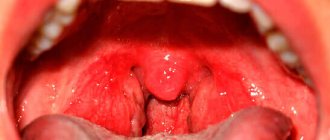Caries is one of the diseases of humanity, found in representatives of nationalities, professions and age categories.
As the disease progresses, dental tissues are destroyed under the influence of internal and external factors. Decaying processes can provoke the development of adverse consequences, including the loss of diseased teeth and the spread of infectious agents throughout the body.
What is caries?
Caries is tooth decay and is a very common disease, especially in children and the elderly. Tooth decay occurs as a result of the accumulation of plaque that attacks the outer layer of the teeth and causes small holes or “cavities” to appear in the enamel. If left untreated, it can penetrate into the soft tissue where it exposes nerves. This results in severe and frequent pain known as toothache.
What Causes Tooth Decay?
Tooth decay can be caused by many reasons and factors, the most common of which are poor diet and lack of dental care.
Treatment for dental caries includes fillings, crowns, or tooth extraction.
Types of disease
There is a superficial type, in which the signs are not noticeable. The second, third and fourth stages are already visible to the naked eye. In this case, the fourth stage is considered the most dangerous, which is expressed by the complete destruction of enamel, dentin and affecting the nerve canals.
There is a contact type of disease that is typical for molars. Caries between teeth is often called multiple caries. The disease also affects dentin and, in some cases, roots. By visual examination, the doctor can determine the subtype of pathology and prescribe surgical treatment.
Causes and risk factors
Here are the main factors causing this problem:
- Smoking: Smoking reduces the amount of saliva in your mouth and saliva is very important as it helps wash away food particles which help keep your teeth nice and clean. Passive smoking is also a risk factor.
- Dry mouth: or “xerostomia” is caused by a number of factors that include certain medications, medical conditions such as diabetes and the aging process. With these conditions, a person's ability to produce saliva is reduced, causing a burning sensation in the mouth and increased sensitivity to certain foods. The problem is that saliva helps remove food debris and plaque, and also prevents the growth of bacteria in the mouth. It also neutralizes the acids present in the mouth.
- Aging: Unfortunately, older people suffer more from tooth decay, which is due to their teeth thinning/wearing over time.
- Gum recession (decrease in gum volume): When gums become exposed, it leaves the root of the tooth exposed, making it fertile ground for plaque to form.
- Bottled water: Drinking bottled water with added fluoride will help protect your teeth from tooth decay. But you may miss out on these protective benefits if you drink non-fluoride water.
- Eating disorder: Anorexia or bulimia may increase the risk of tooth decay. Anorexia tends to reduce saliva production. In turn, bulimia leads to excess acids, often through vomiting, which affects the teeth and gums.
- Problems with Dental Fillings: Dental fillings can weaken over time and provide the perfect environment for dental caries to form.
- Chemotherapy/radiation therapy: Patients who are treated for mouth or neck cancer with radiation therapy are at higher risk of tooth decay. This is because treating cancer with this method can change the composition of saliva, making it easier for bacteria to grow.
- Reflux: This is a disease that only affects the stomach. Acid from the stomach spews back into the mouth, which eats away at the teeth.
Nutrition is another important factor. If a person consumes food high in sweet foods and sugar, it will destroy his teeth over a period of time. It is this erosion that causes dental caries.
If you feel like you can't live without sweets, try to limit your sugar intake and brush your teeth after every meal.
Brushing and flossing are an important part of oral hygiene. It must be performed daily and combined with visiting the dentist twice a year. This will help preserve your teeth.
Classification of caries
There is more than one type of caries: Let's consider the main criteria for classifying caries:
Based on the depth of dental damage, they are classified into:
- caries in the stage of darkening of the enamel. Matte spots appear on the surface of the tooth. Over time, pigmentation intensifies, but no visible damage is noted;
- surface. Due to the demineralization process, defects appear on the surface layer of enamel, but dentin damage does not occur;
- medium, affecting dentin;
- deep, the lesion affects the entire layer of dentin, inflammation of the pulp begins.
Caries can be primary and secondary. The first form means that the affected area was not previously treated, the second indicates that a carious cavity appeared under a filling or dental crown.
Depending on the type of tissue affected, there are:
- enamel caries;
- dentin;
- surface of the tooth root.
According to the degree of localization, caries can be cervical (the lesion is located near the gum), fissure (occurs in natural depressions on the surface of the teeth), interdental (approximal). The latter disease often affects the front teeth.
The problem with tooth decay is that after teeth begin to decay, the lesion travels through the enamel and dentin (the hard material that supports the enamel) before reaching the pulp. The pulp is the soft center of the tooth and contains nerves, blood vessels, and soft tissue.
Tooth decay is made up of bacteria and plaque, which, once they reach the pulp, directly inflame the nerves and cause that familiar pain!
Initial stage of caries: clinical picture
The main cause of any caries is the activity of acid-forming bacteria (Streptococcus mutans and others). Poor hygiene and consumption of large amounts of carbohydrates are the main factors in the formation of dental plaque with an increased concentration of pathogenic microorganisms. The disease clearly demonstrates the mechanism of decay: with initial caries, minerals and trace elements are “washed out” in the enamel. Demineralization of enamel provokes the formation of small light spots: they signal the beginning of the carious process. Under microscopic magnification, these areas appear more porous and rough compared to healthy enamel. The protective properties and aesthetics of the enamel are noticeably reduced, but its structure is not disturbed. This is how initial and superficial caries differ: with the latter, the enamel layer is destroyed, which leads to a corresponding reaction of the tooth (in particular, to a reaction to temperature stimuli).
Stages of initial dental caries
- Chalk spot stage.
At this stage, the stain is white, much lighter compared to healthy areas of enamel. - Dark spot stage.
A more serious form of early caries affecting the deeper layer of enamel. Food coloring penetrates there, causing the stain to become brown or brown.
Symptoms
Symptoms of caries include:
- tooth sensitivity,
- and tooth pain when you eat something sweet, hot or cold;
- bad breath, pain when biting and formation of pus around the tooth.
Holes in the tooth or brown or black spots on the surface are also warning signs.
A visit to the dentist will help detect any signs of tooth decay.
Types of caries depending on the stage of development
Many people are interested in the question of what stages caries has, what a tooth looks like at one stage or another, which is why queries like “dental caries photo stages” appear on the Internet. A person must take into account that the development of the process in his body is influenced by various factors, which are fundamentally different from what he sees in photographs of different stages of a diseased tooth in another person. Experts are negative about the fact that many of their patients diagnose themselves and prescribe treatment, without contacting the appropriate medical institutions.
Only a professional dentist can diagnose caries, determine its stage, optimal methods of treatment and prevention. The World Health Organization has approved several different classifications. At the moment, caries is included in a separate section. It can affect different areas of the tooth, so they distinguish - caries of enamel, dentin, cement (this is a special type of bone tissue that covers the neck and roots of the tooth).
Another classification identifies stages where the main indicator is the depth of caries, that is, whether the pathology affects the upper layers or goes deeper. There are uncomplicated, that is, simple, and complicated caries, when other dental diseases are superimposed on carious processes: periodontitis, pulpitis.
The uncomplicated pathological process is divided into several stages. The first, so-called, stage of staining, under the influence of external and internal factors, a chalky stain is formed on the tooth enamel.
The enamel is at the earliest stage of destruction; experts say that this period cannot be skipped in order to stop the development of putrefactive processes in the tooth. Treatment will be less painful for a person, will take less time, and early detection of caries will affect the cost of dental services.
The next stage of pathology development is defined as superficial caries. If the chalky stain is not removed, it continues to grow; demineralization of the enamel leads to the tooth surface becoming rough. Many people can independently determine this stage in themselves - the tooth begins to react to the temperature of the foods consumed, it hurts from hot or cold, and sensitivity to salty, sweet, and spicy foods increases.
The next stage is intermediate caries. Damage to the enamel-dentin junction is observed. Pain occurs more often, the pain is unpleasant and prolonged. If a diseased tooth is not treated in time, then you can expect the most serious consequences, painful both for the human body and “for his wallet.”
In the WHO classification, uncomplicated caries is called simple, and complicated caries has several other names. There are pulpitis, periodontitis, and other diseases. Here it becomes important to determine the depth of caries penetration, which affects the establishment of the correct diagnosis and the choice of the optimal treatment method.
How to treat caries?
There are several ways to treat tooth decay, which include the use of fluoride-based products such as toothpastes, gels or varnish. Fluoride can be added to bottled water or you can have it professionally cleaned by your dentist.
A popular form of treatment is dental fillings. They are used to fill the middle or outer surface of a tooth and are made from a variety of materials. These include composite materials, silver amalgam and the very popular ceramic inlay.
A dental crown is another option. Can be placed over the eroded part of the tooth. They are made of porcelain or gold.
If the tooth is severely damaged, then the only course of action may be removal. This may sound harsh, but it can help prevent the spread of infection. Your dentist may recommend that you replace it with a dental implant.
Another treatment option for severe tooth decay is root canal surgery. This sounds quite unusual, but dental technology has advanced and can guarantee that it will be much less painful than it used to be.
Another treatment is dental sealants. They can be applied to the grooves or “cracks” in the teeth and protect them.
The important point here is that tooth decay, if left untreated, can cause complications. These include gingivitis and periodontal disease , abscesses and tooth extraction.
What is the healing process?
The first stage of the spot turns out to be the most painless and short-lived. A fairly simple procedure is carried out - removal of the chalk stain, then remineralization of the enamel. The doctor applies solutions of calcium gluconate or sodium fluoride to the neck of the tooth.
The process of treating superficial caries is more complex, but still painless for humans. If carious processes occur in the cervical area, then the treatment is a kind of grinding, that is, the affected area is cleaned, and at the next stage remineralizing measures are carried out.
Sometimes the pathology is localized on contact surfaces or in fissures. Both areas are caries-susceptible, so the treatment process is more complex, including filling the area.
The process of treating average caries becomes even more complex; three stages can be distinguished, which proceed differently for each person. At the first stage, the part of the tooth damaged by caries is removed. At the second stage, treatment with drugs is carried out in order to completely destroy the factors for the development of pathology in the future. At the last stage, the cleaned area is sealed. The treatment process for deep caries is identical to the treatment process for the middle stage, only it is more painful for the patient.
Prevention and recommendations
Dental caries is preventable: Although this dental disease is very common, there are a number of precautions you can take. These procedures are easy to use and can become part of your daily dental routine. These include:
- Brushing your teeth 2 times a day with fluoride toothpaste . And use dental floss, as this will get rid of any food residue stuck between the teeth.
- Wash away any food particles using mouthwashes . It also helps prevent the formation of bacteria in the mouth, which is the main cause of tooth decay.
- Avoid consuming sugary or starchy foods . If it's hard to resist, limit them to treats only and brush your teeth after eating.
- Get a professional cleaning from your dentist . Your dentist or dental hygienist can give your teeth a thorough cleaning and remove tartar and plaque.
Many people today suffer from tooth decay, but it can be prevented by following a few smart preventive measures.
Forecast
If a carious cavity is not properly treated, then most often the tooth is subject to significant destruction.
The presence of dental caries increases the risk of caries due to several factors:
- Oral hygiene habits and food intake that lead to tooth decay due to plaque and acids can cause even more teeth to become susceptible to decay.
- Bacteria tend to accumulate and attach to the surface of fillings more than to the smooth surface of the tooth, so these areas are more likely to be affected by tooth decay.
- Chips and cracks in teeth can allow bacteria and food to penetrate into the deep layers of the tooth and cause an abscess.
The prognosis can be favorable only if there is a radical change in eating habits (reducing the sugar and carbohydrate content in the diet) and a rational approach to oral hygiene (proper use of toothbrushes, dental floss, interdental brushes and irrigators).
Timely visits to the dentist (2 times a year) with professional hygiene measures, as well as timely grinding and polishing of already placed fillings will ensure a favorable prognosis.











